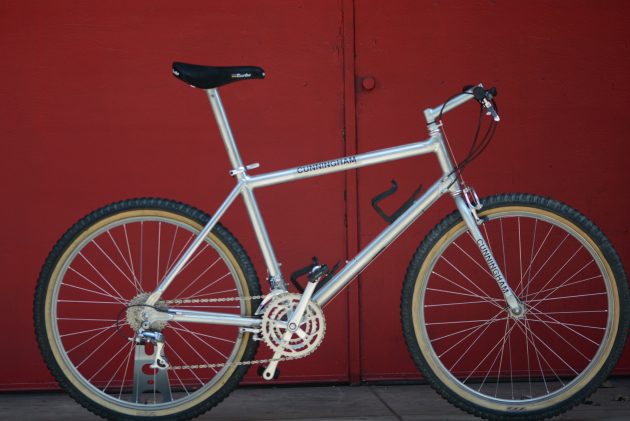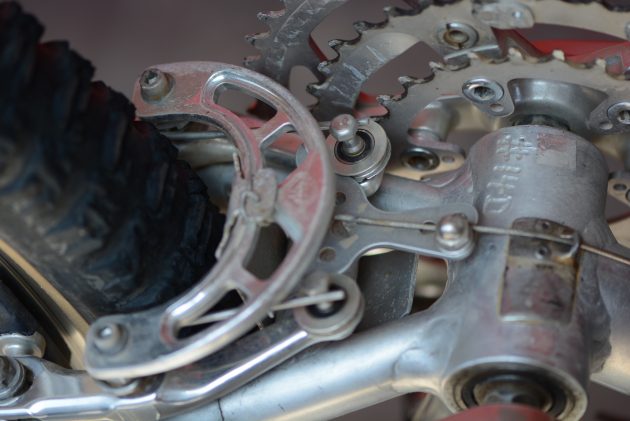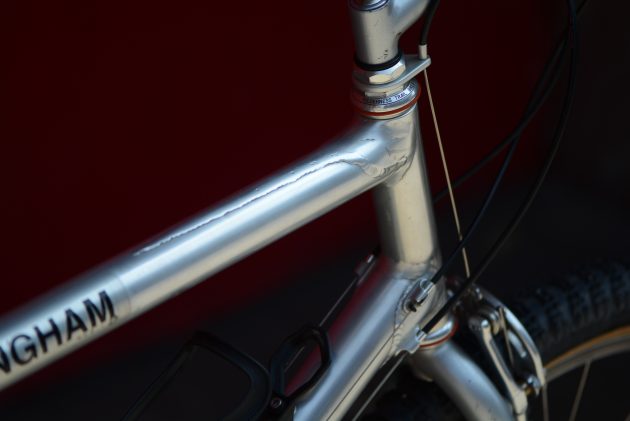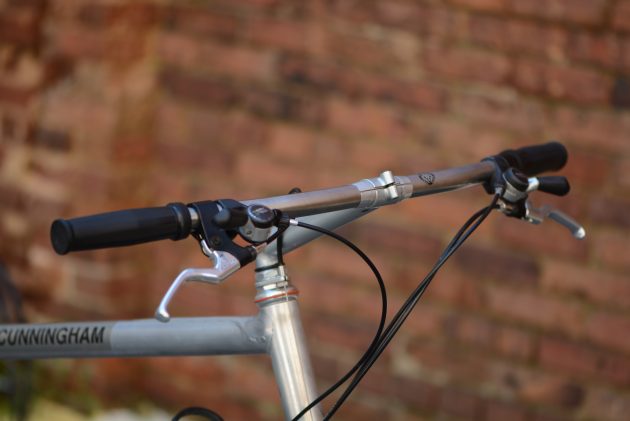In Print: Be Kind, Rewind— 1992 Cunningham Racer
Originally posted on March 4, 2019 at 0:52 amEditor’s note: This article originally appeared in issue 208 of Dirt Rag Magazine. Like what you see? Subscribe now at dirtragmag.com/subscribe to catch issue 210, coming real soon.
By Martin Kozaczek
A consummate tinkerer, Charlie Cunningham started making magnesium stems and aluminum seatposts for road bikes in the mid-1970s. By the end of the decade he had constructed the world’s first aluminum mountain bike, using 6061 alloy when the rest of the world was just starting to make steel mountain bikes. Aluminum bikes have been around since the 1930s, and Gary Klein started making oversized aluminum road bikes in the mid-’70s, but nobody had made a purpose-built mountain bike out of the metal before. Interestingly, Cunningham not only drew inspiration to build bikes from Klein, but the two corresponded frequently about their individual ventures. I had a chance to read some of these letters and really appreciated the insight into the early days of both men’s work.
Cunningham went on to conduct a series of experiments with different bike geometries and characteristics. He would go so far as to cut the bike in half to alter the geometry, then try again. The end result was radically different from the standards back then. His bikes had steeper head and seat tubes, sloping top tubes, relatively short chainstays, 115 mm front hubs, 135 mm rear spacing for zero-dish wheels, a 1x drivetrain and custom brakes. All of this made for lightweight, aggressive bikes that were both proficient climbers and stable descenders.
By the early ’80s he was well underway, building 15 to 20 bikes a year. In 1982, Cunningham, along with Steve Potts and Mark Slate, founded Wilderness Trail Bikes (WTB). Cunningham continued to build bikes into the early ’90s, ultimately making approximately 185 in total. This D-series bike was one of the very last built in 1992 and represents the final evolution of Cunningham’s idea. Although these later bikes had fewer personal touches, they lost none of their uniqueness and performance. Trademark elements like the “full tang” gusset on the top tube and the custom-formed seat tube and machined head tube adorned all of his bikes.
I count myself among the lucky few who have had a chance to ride one of his creations and experience firsthand his ingenuity and design philosophy. The bike shown here is among my most prized possessions, but it’s so much more than that. It’s more functional art than simply a bike. Riding or wrenching on this bike is an opportunity to relive a part of history.
In August 2015 Cunningham fell off his bicycle and suffered a serious brain injury, preventing him from engaging in the tinkering he loves. For more information about Cunningham, his bikes and how to help pay for his rehab, go to cunninghambikes.com.
For more about this Cunningham and other classic mountain bikes, check out Martin Kozaczek’s website: secondspincycles.com.